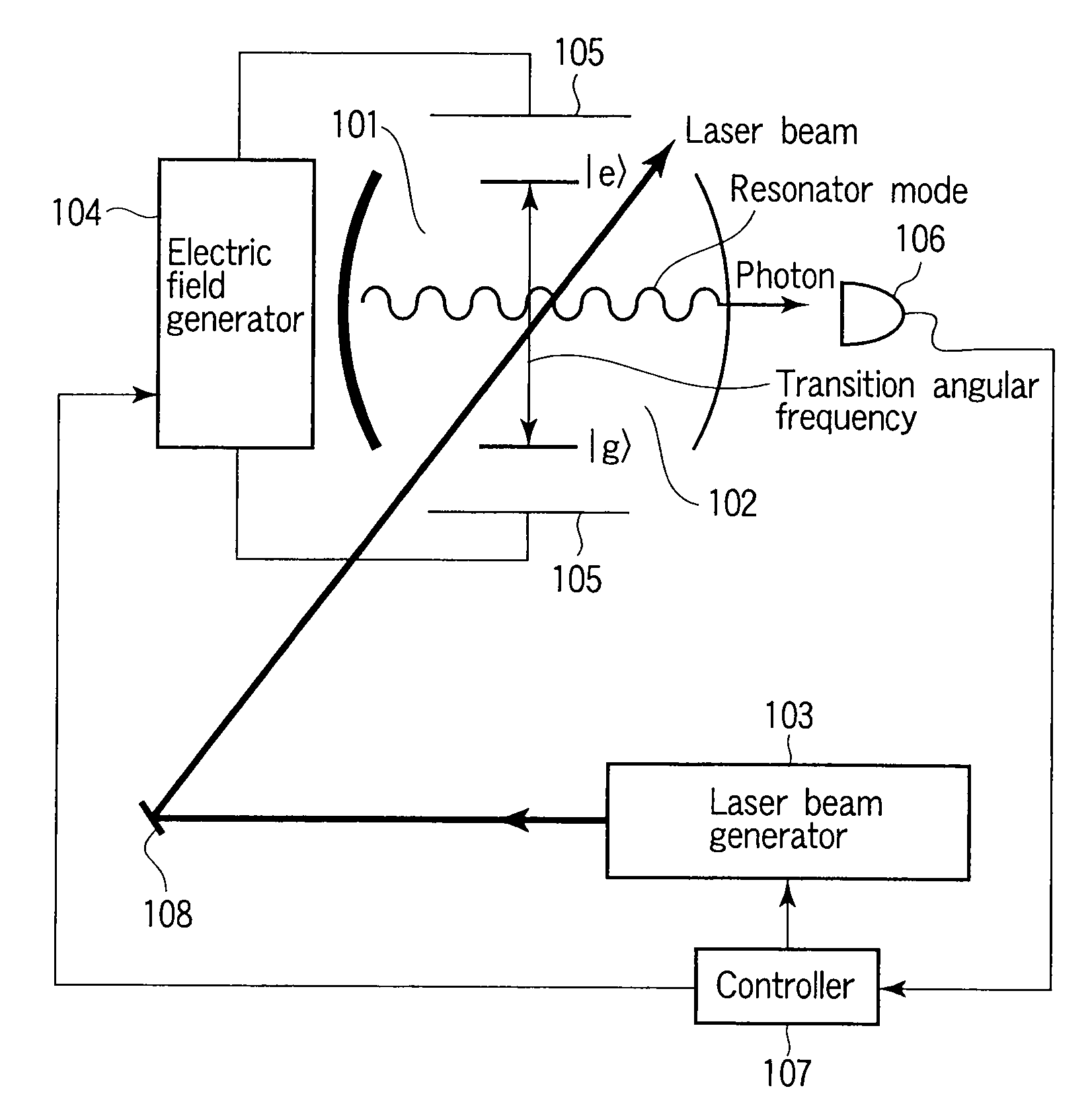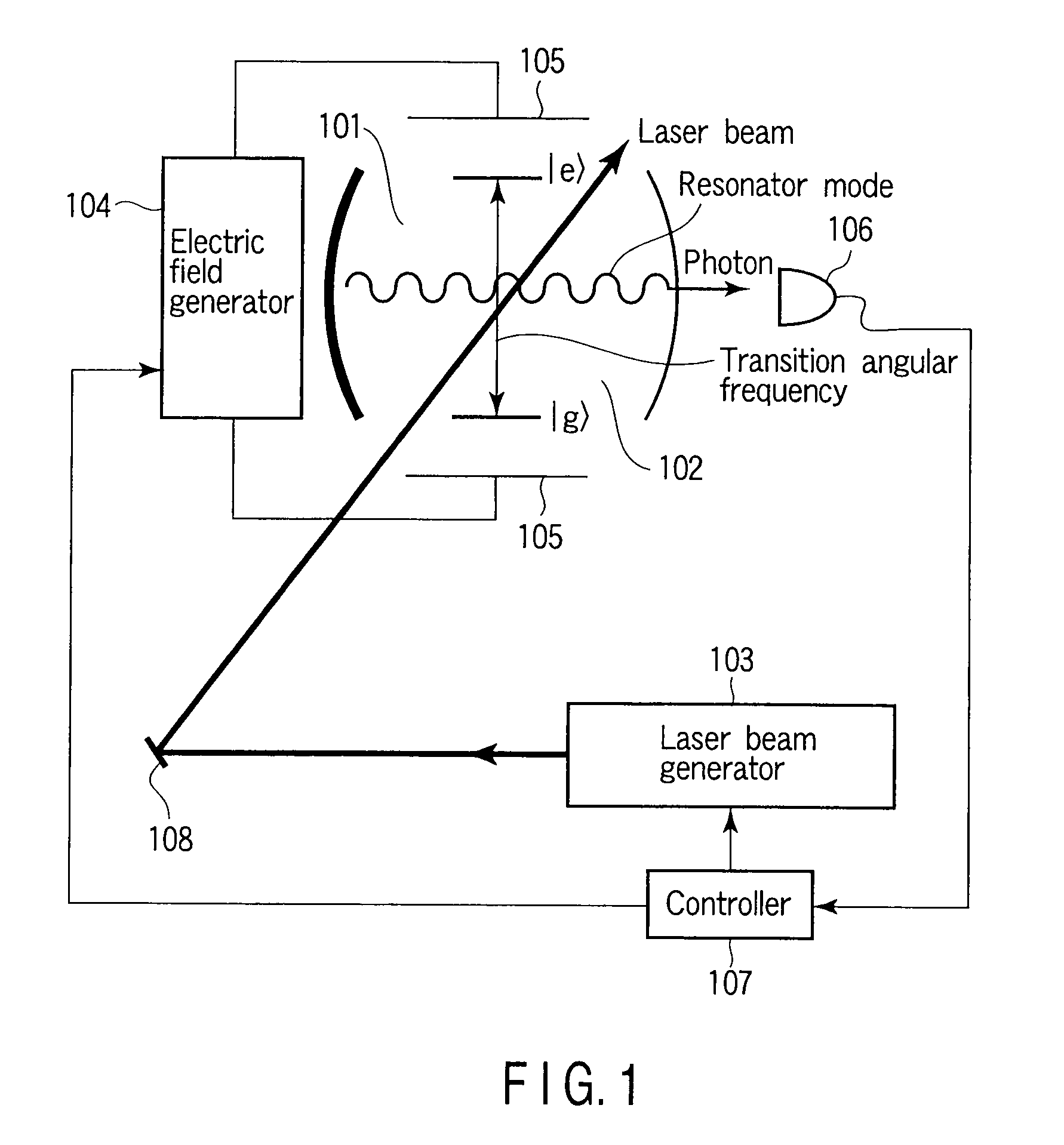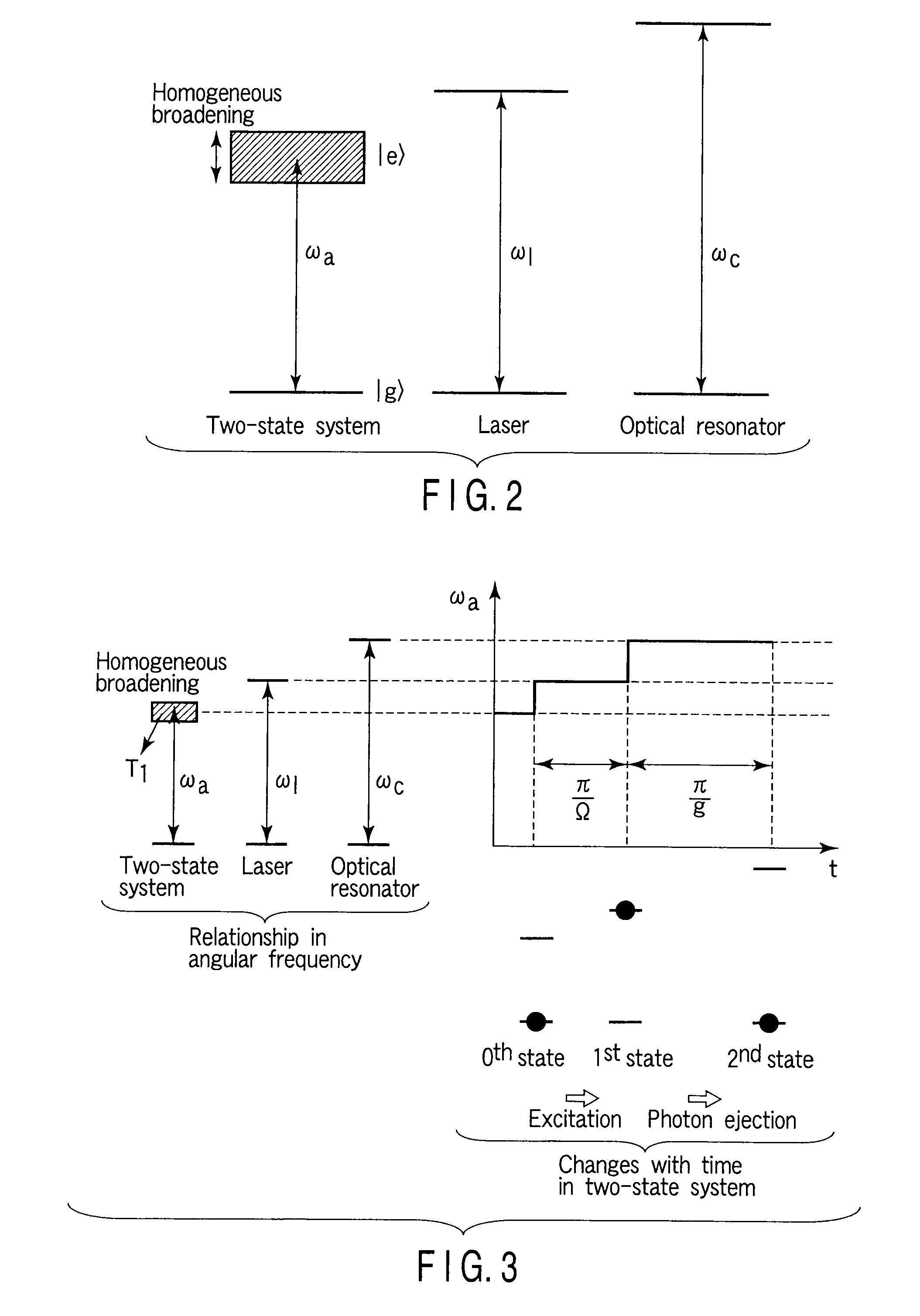Single-photon generation apparatus and quantum bit reading apparatus and method
a generation apparatus and quantum bit technology, applied in the field of single-photon generation apparatus and quantum bit reading apparatus and method, can solve the problems of no method of ejecting photons in a particular, a lot of time, and light becomes stray light (noise) and is liable to mix with a single photon to be used
- Summary
- Abstract
- Description
- Claims
- Application Information
AI Technical Summary
Benefits of technology
Problems solved by technology
Method used
Image
Examples
first example
[0072]FIG. 9 shows a single-photon generation apparatus according to first to fourth examples. In the first example, Rabi oscillation is used in the first stage, and vacuum Rabi oscillation is used in the second stage.
[0073]In the single-photon generation apparatus of the first example and a method employed therein, a Pr3+ ion contained in Pr3+:Y2SiO5 crystal obtained by replacing 10−5% Y3+ ions in Y2SiO5 crystal with Pr3+ ions is used as a two-state system. The Pr3+:Y2SiO5 crystal corresponds to the material 102. This crystal has a size of approx. 2 mm×2 mm×2 mm, and extra-high reflectance mirrors are formed on the opposite surfaces of the crystal to have a resonator structure. One of the mirrors is set to a reflectance of substantially 100% (99.998% or more), and the other mirror is set to a reflectance of 99.924%, thereby providing a one-sided resonator (corresponding to the optical resonator 101). The resonator mode of this resonator is made to resonate with a frequency higher b...
second example
[0081]In a second example, adiabatic passage is used in both the first and second stages.
[0082]In the second example, when applying an electric field to crystal containing a Pr3+ ion, the controller 903 firstly applies the electric field E(1) to the crystal, to which any electric field is not yet applied, then increases the electric field E(1) to the electric field E(3) at a preset increase rate in 10 μs, then increases the electric field E(3) to the electric field E(4), and then increases the electric field E(4) to the electric field E(6) at a preset increase rate in 40 μs. Thereafter, the controller 903 restores the state of the crystal to the initial state in which no electric field is applied, and then resumes the above-mentioned electric field application and increase. By repeating this process, a photon is ejected, every approx. 50 μs, to the low-reflectance mirror side of the optical resonator 101 as a one-sided resonator. This operation can be observed by the photodetector 1...
third example
[0083]In a third example, Rabi oscillation is used in the first stage, and adiabatic passage is used in the second stage.
[0084]In the third example, when applying an electric field to crystal containing a Pr3+ ion, the controller 903 firstly applies, for 1 μs corresponding to π / Ω, the electric field E(2) to the crystal, to which any electric field is not yet applied, then increases the electric field E(2) to the electric field E(4), and then increases the electric field E(4) to the electric field E(6) at a preset increase rate in 40 μs. Thereafter, the controller 903 restores the state of the crystal to the initial state in which no electric field is applied, and then resumes the above-mentioned increases in the magnitude of the electric field. By repeating this process, a photon is ejected, every approx. 40 μs, to the low-reflectance mirror side of the optical resonator 101 as a one-sided resonator.
[0085]This operation can be observed by the photodetector 106.
PUM
 Login to View More
Login to View More Abstract
Description
Claims
Application Information
 Login to View More
Login to View More - R&D
- Intellectual Property
- Life Sciences
- Materials
- Tech Scout
- Unparalleled Data Quality
- Higher Quality Content
- 60% Fewer Hallucinations
Browse by: Latest US Patents, China's latest patents, Technical Efficacy Thesaurus, Application Domain, Technology Topic, Popular Technical Reports.
© 2025 PatSnap. All rights reserved.Legal|Privacy policy|Modern Slavery Act Transparency Statement|Sitemap|About US| Contact US: help@patsnap.com



